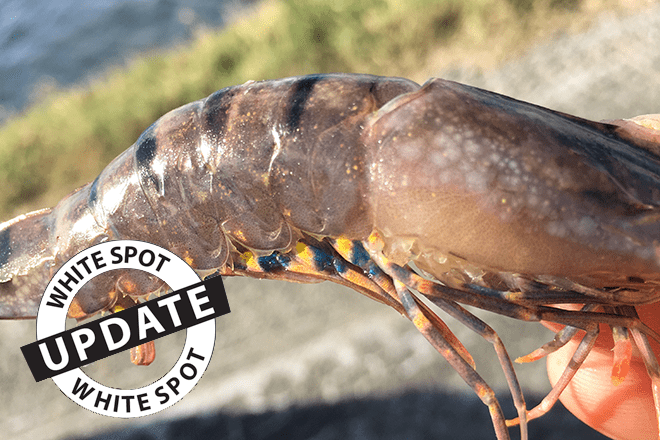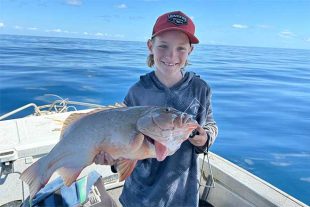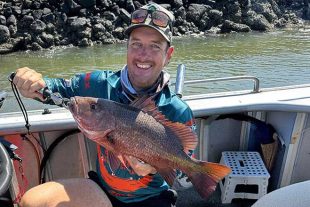NSW lifts importation ban on low-risk crustaceans from Queensland
The NSW Department of Primary Industries has amended control orders to allow for the movement of negligible risk decapod crustaceans from the white spot restricted area into NSW.
As a result, NSW is now allowing the movement of species such as blue swimmer crabs, mud crabs, lobsters, and spanner crabs into NSW from the white spot restricted area, provided certain biosecurity conditions are met. Risk mitigation measures include the correct disposal of all crustacean waste and waste water i.e. to council approved landfill or sewer systems, and no live animals are to be returned to waterways. NSW DPI authorised officers will be undertaking compliance activities to ensure that conditions under the new control order are met. Heavy fines will apply to anyone found in breach of the control order.
For more information about the control order or movement requirements, visit http://www.dpi.nsw.gov.au
Current situation
Biosecurity Queensland has completed treatment and discharge of water on all infected prawn farms in southeast Queensland and all farms are now laying fallow for one year to further assist with the eradication of white spot in the area.
Since the detection of white spot disease in December 2016 the Queensland Government has spent more than $15 million on the response, which is expected to increase to more than $25 million over the next two years. More than 130 staff from the Department of Agriculture and Fisheries, interstate biosecurity partners and other departments have been involved in the response so far.
White spot movement restrictions
To reduce the likelihood of white spot spreading, movement restrictions are in place. This means that raw prawns, yabbies and marine worms cannot be removed from the restricted area which extends from Caloundra to the NSW border, following a line 100m off the eastern coasts of Bribie, Moreton and Stradbroke islands.
Crustaceans, other than those exempt, caught in the restricted area must stay within the area, unless they are cooked first, as cooking destroys the virus that causes white spot.
The movement restrictions also apply to frozen, uncooked crustaceans as freezing does not destroy the virus.
The following items must not be removed from the restricted area unless cooked first:
• Prawns
• Yabbies
• Marine worms
Penalties apply to anyone who breaches these restrictions.
Bait prawns (including freshly caught yabbies and marine worms) sourced from outside the restricted area can be used, however, once brought into the restricted area, they cannot be moved back out.
To ensure the ongoing health of our marine habitat, fishers should only use Australian wild-caught prawns as bait purchased from a local bait supplier. Imported, uncooked prawns may pose a risk for the introduction of exotic diseases such as white spot.
Exemption for crabs, lobsters and bugs
Crabs, lobsters and bugs are exempt from the movement restrictions and can be taken out of the restricted area. As these animals are caught and sold for the sole purpose of being eaten, the risk of them being returned to natural waterways and spreading the white spot virus is low.
The exemption applies to spanner crabs, three spotted crabs, blue swimmer crabs, mud crabs, red champagne lobsters, slipper lobsters, tropical rock lobsters, red claws and bugs.
While fishers will now be able to move these exempt species out of the restricted area, anyone wishing to move them interstate must check the importation requirements of the destination state before doing so.
Fishing restrictions
To help prevent further outbreaks of white spot in South East Queensland, fishing is prohibited within 100metres of water intake and outlet channels and in drainage channels used by land-based prawn farms in the Gold Coast City Division 1/Coomera electorate district. This includes line fishing and the use of other fishing equipment such as crab pots, cast nets and yabby pumps.
The restrictions apply to waterways surrounding prawn farms in Alberton, Coomera, Gilberton, Helensvale, Hope Island, Jacobs Well, Norwell, Ormeau, Pimpama, Southern Moreton Bay Islands, Stapylton, Steiglitz and Woongoolba.
Importation requirements from other states
To find out requirements for importing Queensland crustaceans into other states it is important to check their relevant websites.
NSW
http://www.dpi.nsw.gov.au/fishing/pests-diseases/animal-health/aquaculture/white-spot-disease
South Australia
http://pir.sa.gov.au/aquaculture/aquatic_animal_health/white_spot_disease
Western Australia
https://www.agric.wa.gov.au/importing-miscellaneous/biosecurity-alert-white-spot-disease-prawns?page=0%2C1#smartpaging_toc_p1_s0_h2
Northern Territory
https://nt.gov.au/marine/for-all-harbour-and-boat-users/aquatic-pests-marine-and-freshwater/white-spot-disease
Victoria
http://agriculture.vic.gov.au/agriculture/biosecurity
Tasmania
http://dpipwe.tas.gov.au/biosecurity-tasmania
Further information
Further information on white spot is available on the Department of Agriculture and Fisheries website.
Subscribe to the Department of Agriculture and Fisheries aquatic pest and disease alerts for regular updates on the white spot disease response
white spot restricted area white spot restricted area white spot restricted area
 Bush ‘n Beach Fishing Magazine Location reports & tips for fishing, boating, camping, kayaking, 4WDing in Queensland and Northern NSW
Bush ‘n Beach Fishing Magazine Location reports & tips for fishing, boating, camping, kayaking, 4WDing in Queensland and Northern NSW









